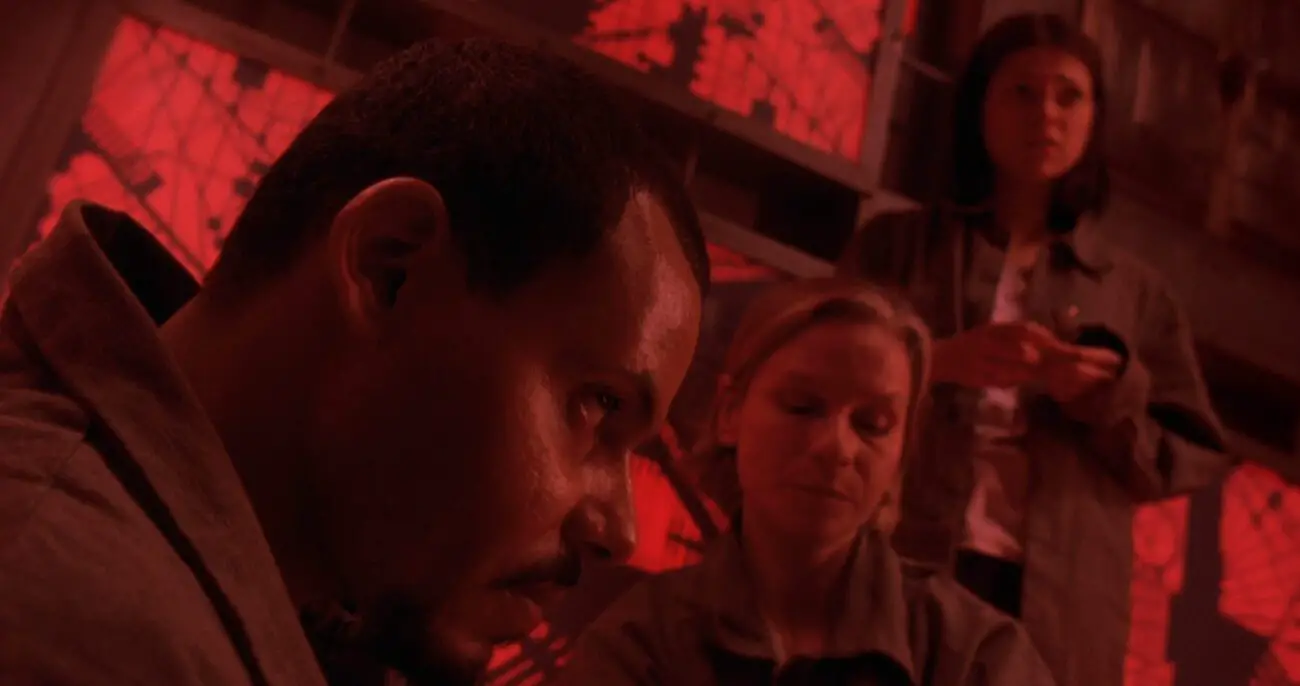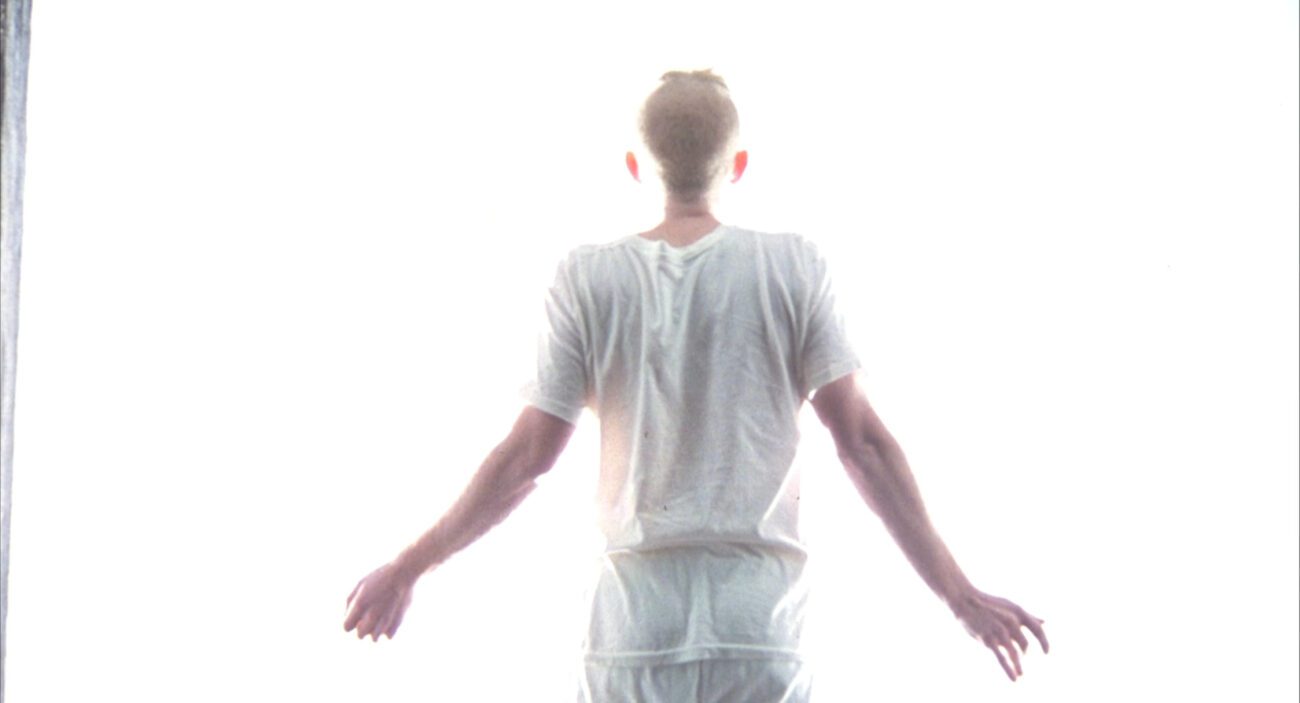I don’t recall why I originally watched Cube. It’s not even clear to me whether I rented it or watched it on a movie channel, like Showtime or Cinemax. What I do remember clearly is how I felt when Kazan walked out of the cube at the end, overcome by that bright light. There was, and still is, something about a narrative ending before any kind of explanation as to why the events occurred that holds a special place in my heart.
To me, endings matter. That said, I don’t have any specific expectations whenever I commit myself to watching a film. I’m open to endings that explain it all and wrap everything up in a neat little bow. Cliffhangers work for me, too, whether a sequel ever arrives. Deus ex machina is fine, as are twist endings. I don’t prefer one type of ending over another.
However, they must make sense to me. Sometimes, I am disappointed by endings, often for films that the majority seem to adore. It’s all subjective, I know. Film is an art form, after all. Still, I always try to interrogate my own responses to art. Just why the heck do some endings work for me and some do not?
First, let’s look at how Cube arrives at its finale.
The opening scene of the film finds a man named Alderson waking up in a strange room, seemingly not knowing how he got there. He finds an exit and simply arrives in a room not too dissimilar to the previous one. This is our main character, right? We’re clearly going to go on a journey with this man. However, this is not meant to be. Alderson is graphically killed by some wire before he can continue his journey.
Right away, director and co-writer Vincenzo Natal, along with co-writers André Bijelic and Graeme Manson, let the audience know two things:
1) this place, wherever and whatever it is, is dangerous, and
2) anyone can die.
It makes sense to me, then, that when we come to meet the film’s main players there’s a real sense of dread. If any of these characters can die, then there’s very little chance of a happy ending, whatever that happy ending could possibly be. Regardless, credit to all involved for actually getting me to care about these people, albeit to varying degrees.

If anyone comes close to being the main character for the majority of Cube’s running time it’s Quentin McNeil (Maurice Dean Wint), a police officer who takes charge of the situation during the film’s first act. What’s impressive here is that, although McNeil begins the film as possibly the hero, he evolves (or devolves) into the film’s villain. (Although it could be argued that whoever or whatever put these individuals into the cube are the real villains, we never meet them.) But, why is that impressive?
Because I completely buy him as the hero. He’s certainly not perfect, but if he’s trying the do the right thing and save as many of the group as possible, he’s a hero. At the same time, given his persona, I also completely buy that he becomes the villain. It’s a heck of a performance, and although it’s a bit unsettling seeing the only Black actor in the film become the villain, it could be seen as not only impressive but progressive.
When I first watched the film nearly 25 years ago, I was struck by this change happening to the only person of color in the movie. It wasn’t something I was ever critical of at the time, but it was hard to not notice. I remember wondering if such a choice was racist, but I don’t believe that anymore. Why should only white characters be allowed such dynamic character arcs?
A Black character in 1997 introduced as the film’s possible hero and then transitioning into the film’s villain is something that makes Cube ahead of its time. In fact, I’m at a loss to come up with another genre film that’s done something remotely similar.
Then, of course, there are the others. There’s David Worth played by David Hewlett, who’s been in tons of genre stuff over the years. Leaven is played by Nicole de Boer whom, even after all these years, I seem to still have a crush on. Nicky Guadagni does a solid job of playing Dr. Helen Holloway. And then there’s Kazan, a mentally challenged math savant played by Andrew Miller. Thankfully, Miller plays Kazan with enough subtly and pathos that the performance is less over-the-top and stereotypical than one would find in the late ’90s.
It’s an excellent cast. Given that the film, however visually striking, is dialogue-heavy and reminiscent of a play, it’s good to see that Natal got just the right kind of performances from the actors.
The cube set is gorgeous and evokes a nightmare. It also gives me strong Event Horizon vibes, which is certainly a plus. Seeing as how we don’t exactly know who’s responsible (I’ll get into this in just a bit), it seems perfectly reasonable to me that the cube exists as a kind of Hell. The reason I don’t fully buy into that theory, though, is that we aren’t given enough backstory on every central character to back this up.

If these characters were in Hell, it stands to reason that we’d be given motives as to why everyone would be in such a place. And I don’t even mean that I need to have a monologue from everyone ala The Breakfast Club to explain why they’re all trapped in the cube. Quentin never fully explains his background, but we get enough information to determine what kind of person he was before the start of the film. We could’ve gotten that with everyone.
As it stands, we know enough, but I don’t see why anyone would be in Hell, even Quentin (although his actions in the film make me question that). If anything, I think it’s enough to believe what Worth and Holloway believe. The government built the thing and put people inside. That works for me, and I don’t even need to know why.
It’s funny that when I originally saw the film, Worth’s comments apparently went over my head because I was convinced it was aliens. Chalk it up to my youth, growing up without the internet, or not having a better copy of the film, instead of a worn VHS recording.
Regardless, it’s fair to say that each of the three could explanations work, because none are ultimately proven. It could be:
1) Hell or some form of an afterlife,
2) the government, or
3) aliens.
I’m sure there are more possibilities, but I want to finally address Cube’s ending. Once Quentin loses it and kills Holloway, Worth, Leaven, and Kazan make their way to a specific room that will lead to the way out. The only one able to do so, though, is Kazan. He exits the cube and enters into a bright light, and then the end credits begin.

Question 1: Is it necessary to know why these people were put into the cube?
I don’t believe so. The why doesn’t really matter in the context of this film because Cube is more about how the characters respond to their circumstances than why they’re there. This results in a tight 90-minute film that never really slows down. Again, it’s mostly dialogue-driven, but even when the action slows or comes to a stop, the characters revealing themselves to each other are what seems to be the point.
Cube is a sci-fi horror film, but more than that, it is character-driven. I used the word “action” before, but there’s really very little action. There’s movement, and there’s suspense whenever they enter a room (or when Holloway is hanging outside the cube near the film’s climax), but for the most part, it’s a group of people in rooms where the only visual differences are the colors.
This film is about people.
Question 2: Would knowing what lay beyond the cube have significantly affected the film?
Overall, no. I remain a believer in my response to Question 2. That said, it definitely would’ve affected the ending. In a literal sense, obviously knowing what’s outside the cube would’ve changed the ending. In a more thematic sense, though, having a more concrete answer would’ve affected how I saw the characters.
For example, if it were the government (such as men in lab coats holding clipboards standing just beyond the bright light), I’d see all individuals (including Worth who helped design the cube) as pawns in an experiment. I also have to admit that I’d feel a little bad for Quentin’s breakdown (though not too much) if it were the result of such a scenario. People do crazy things when they’re driven crazy.
If it were aliens, again, they’re victims in an experiment of some kind. If it’s Hell, well, then, I would certainly question everyone’s attitudes and motives throughout the film, and not just Quentin. If it were Hell, Kazan is there, and I’d wonder just what the heck he did to get put in that cube.
Of course, all of this is just speculation, which I suppose is part of the fun with an ending like this. As I stated in the beginning, I like definitive and clear finishes, but at the same time, particularly with a film like this, not knowing is good.
In horror films, we have a general binary. The audience sees the thing (whatever that thing is) or they don’t see it. Sometimes it’s better to not see the Blair Witch. Other times, seeing a possessed 12-year-old girl can be downright terrifying. Of course, it’s up to the filmmakers to decide which is best. And then, it’s up to the audience to respond or not.
I for one loved revisiting Cube after over a decade. It cemented for me just how simple, yet visually stunning horror films can be. For being over 25 years old, late-’90s CGI notwithstanding, Cube remains a solid work of sci-fi-horror. It’s about people and how they react when put in uncomfortable and foreign positions with strangers. And it’s about how it’s okay to not know everything when watching a film.
Sometimes, it’s the best.




